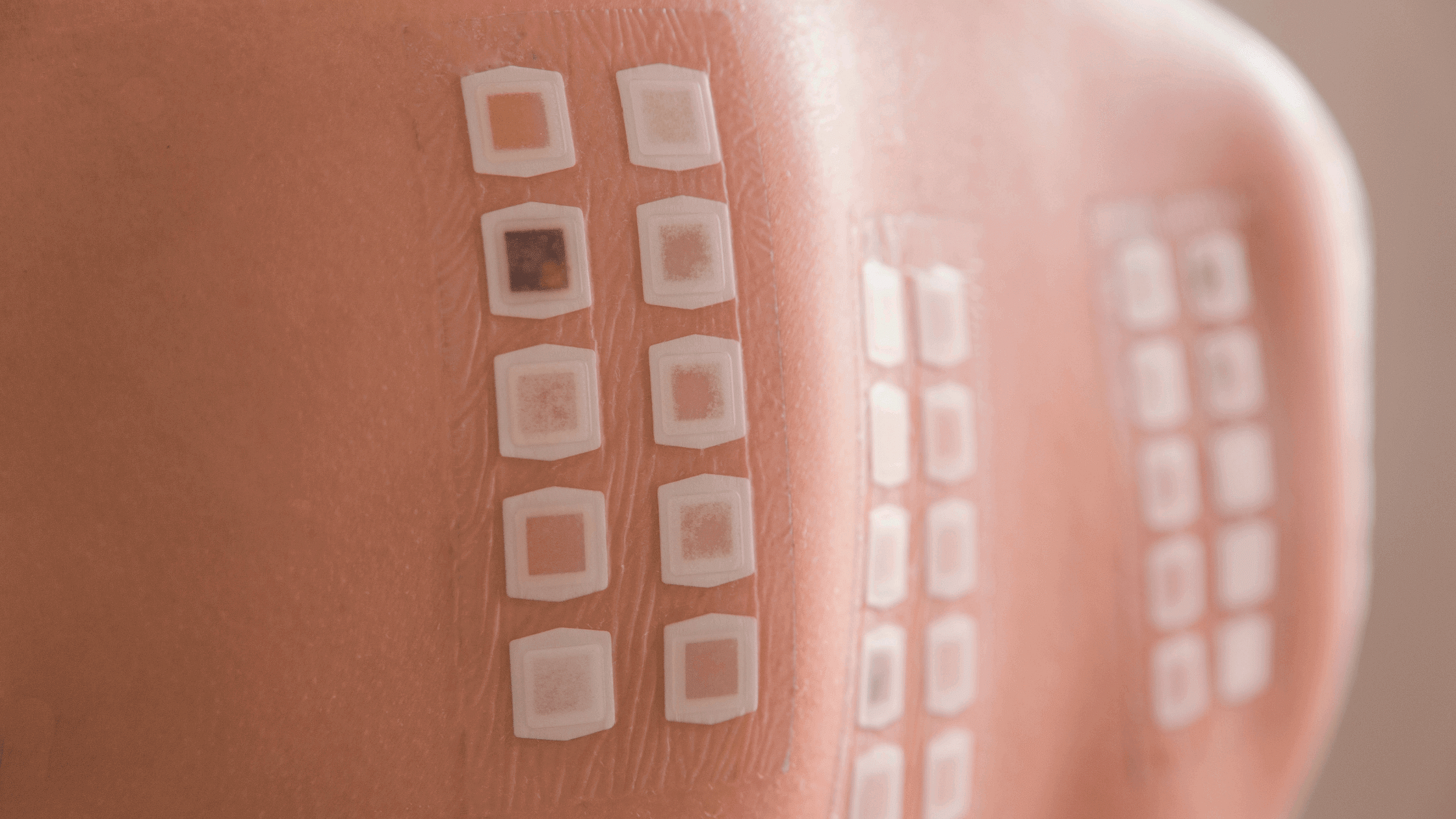What Is A Patch Test And How Is It Done? | Know All About Patch Test
Patch tests are conducted by doctors to check if the skin condition has worsened due to a specific allergy. Here's a guide to help you do the patch tests accurately.

Suppose you're allergic to a specific substance. How will you know? By performing a patch test, a particular type of allergic test mainly conducted by experts. Even before you try a new skincare product, it is recommended to do a small patch test at home, where you apply the product on your wrist and let it sit for a while to check for any allergic reactions. Imagine purchasing an aftershave to prevent shaving burns and bumps and then getting a skin rash because an ingredient in the aftershave doesn't agree with your skin. No man wants that.
What Is A Patch Test?
Doctors conduct patch tests to check if the skin condition has worsened due to a specific allergy. A small patch of your skin is exposed to a suspected substance, and then your physician looks for signs of any allergy.
The three chief allergy variants are:
- Contact allergens, which must come in contact with your skin to cause an allergic reaction, such as poison ivy, cause allergic reactions in some.
- Inhaled allergens, which can affect the lungs, nostrils, or throat.
- Ingested allergens are present in food, such as peanuts, seafood, and more.
Also read: Sapat lotion- what it does and how and when to use it
How To Do A Patch Test?
- When you go to a doctor to check for allergies, they might conduct a blood test or skin test. Skin tests can help identify various allergens, including inhaled, ingested, and contact allergens. There are three types—scratch test, patch test, and intradermal when it comes to skin tests.
- In a patch test, adhesive patches are placed on your skin. It is advised to leave them on for about 48-96 hours. Your doctor should suggest to you your future course of action once the test is complete.
How To Do A Patch Test For The Face?
When you buy a new skincare product, you must never apply it directly to your face. So what could you do? Try to use a small amount of product, either on your wrist or the back of your ear. Make sure you take only a little bit of the product. Now, let it sit for a day. You can leave it overnight too. Then, check for any reactions. If you do not feel any discomfort, irritation, or inflammation, that means the product is compatible with your skin type. Sometimes even products like face wax for men could have side effects. So the patch test is essential to perform before you try a range of different products.
Why Should You Do A Patch Test Before Testing Or Trying Any New Products?
If you frequently suffer from allergies or reactions while using new products, you must make it a habit to do a patch test. They are easy to conduct, and not much preparation is required. It would help if you also learned everything about Betnovate cream- a proven remedy to treat skin conditions and rashes caused by bacteria and fungi on the body.
How Long Does A Patch Test Take?
The doctor's allergy skin test can take anywhere between 48 to 96 hours. However, if you are conducting a patch test at home, you can let it sit anywhere between 12 to 24 hours.
How To Take An Allergy Test?
- Allergy patch tests and skin patch tests are different. An at-home skin patch test can be conducted at home to test a new skincare product while the doctor performs an allergy test. Apart from a patch test, there are other allergy testing types, such as blood tests and elimination diet tests.
- Blood tests are conducted by the doctor when the allergic reaction is severe. Here, the laboratory looks out for antibodies related to specific allergens. This test is also known as ImmunoCAP. In the elimination test, your doctor will look out for food items causing any allergic reactions in you.
Are There Any Risks Of Allergy Testing?
- Allergy tests can sometimes cause mild itching or redness. Sometimes, even minor bumps or swelling might occur. Your doctor might prescribe a topical lotion to ensure they clear in a few days. However, when you do a skin patch test at home and notice any reactions, it is essential to visit a doctor immediately to tackle the side-effect.
- One might rarely experience a severe allergic reaction where immediate medical intervention becomes necessary. So, even if you notice a minute difference, it is crucial to keep an eye out, so if the condition aggravates, one must consult a physician without any delay.
Also read: Boxcar scars and how to treat them
What Happens After Allergy Testing?
After testing using different allergy testing techniques, your doctor will be able to narrow down which allergens are causing the adverse effects and will be able to decide a plan on how you can avoid them in the future. However, if you notice an allergic reaction during your patch test at home, then consult a doctor without any delay, and he or she will be able to curb it via medication or topical lotions.
References
- Rosana Lazzarini, Ida Duarte, and Alessandra Lindmayer Ferreira; Patch tests - https://www.ncbi.nlm.nih.gov/pmc/articles/PMC3900336/
- Indian Journal of Dermatology, Venereology and Leprology; Art and science of patch testing - https://ijdvl.com/art-and-science-of-patch-testing/
- Jean-Marie Lachapelle, Howard I. Maibach; Patch Testing and Prick Testing: A Practical Guide Official Publication of ICDRG - https://books.google.co.in/books?hl=en&lr=&id=QWvDDwAAQBAJ&oi=fnd&pg=PR6&dq=Lachapelle+JM,+Maibach+HI.+Patch+testing.+Prick+testing.+A+practical+guide.+Berlin:+Springer%3B+2003.&ots=Is1iyDhHDf&sig=cOeGFZwWqhlHCqVgaQOx_SYmkOs&redir_esc=y#v=onepage&q=Lachapelle JM%2C Maibach HI. Patch testing. Prick testing. A practical guide. Berlin%3A Springer%3B 2003.&f=false
- Gabriela Pichardo, November 2020; If You Get Skin Testing for Allergies - https://www.webmd.com/allergies/skin-test
- American College of Allergy, Asthma and Immunology; Allergy Testing - https://acaai.org/allergies/allergy-treatment/allergy-testing

